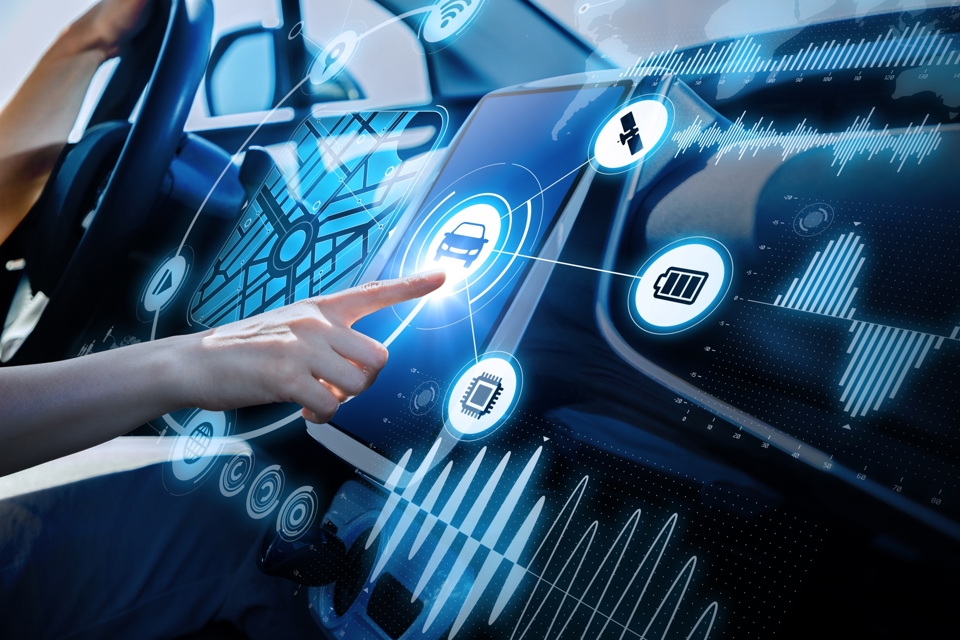VNC Automotive has questioned the automotive industry’s rush to replace conventional controls with touchscreens.
The software company says that manufacturers are at risk of alienating customers, compromising safety, and drawing the ire of regulatory bodies.
“Car manufacturers are locked in a race,” says Tom Blackie, CEO of VNC Automotive. “Not the kind that demands ever-increasing power outputs or shrinking zero-to-sixty times, however. Instead, the results of this contest are measured in inches.”
With each new model launch, vehicle manufacturers push the boundaries a little further, it says, with a race to expand the digital real estate, and make it more prominent.
Tablet-sized screens perched on the dashboard originally became popular and were soon joined by digital instrument clusters before infotainment systems were defined by the emergence of Tesla, with almost everything controlled by a giant screen in the middle of the dashboard.
It meant that even the most basic interaction, from changing the radio station to turning on the headlights, required the driver to delve into a menu.
However, with its technology installed in more than 35 million vehicles worldwide, VNC Automotive questions whether today’s touch-based interfaces are really the best solution.
“Having a giant touchscreen interface is really about saving hardware costs by implementing everything in software,” says Blackie.
“Recently, though, there’s been growing disquiet as years of ergonomic study and usability experience are abandoned in the rush to cram everything onto a single screen.”
A recent study by the UK’s Transport Research Laboratory and road safety charity IAM Roadsmart found that drivers took their eyes off the road for as long as 20 seconds when asked to play a track from Spotify using a touchscreen interface, long enough to travel a distance of 630 metres at 70mph – more than a third of a mile.
During that time, many drivers struggled to maintain their lane position, while some failed to respond to a simulated emergency event.
Overall, reaction times increased by up to 57% when interacting with these devices; driving while over the alcohol limit by comparison only increases reaction times by 12%.
In light of this research, Fleet News reported how recent changes to law around the use of mobile phones while driving were a “missed opportunity”, according to road safety experts.
Dissatisfaction with the proliferation of these interfaces isalso growing among drivers, suggests VNC Automotive, and with the European Commission estimating that driver distraction is a factor in up to 30% of all accidents in Europe, it seems likely legislators will soon feel compelled to step in.
“The sluggishness that plagued early systems has now largely been addressed, but the lack of physical feedback on activating a touchpoint still demands that drivers glance at the screen for visual confirmation,” explained Blackie.
“With many cars lacking a convenient surface to brace against, the task of aiming at a small control with an extended arm in a car that’s bouncing around can quickly become a repetitive one, prolonging the time spent diverting focus from the road.”
Haptic feedback systems have improved from early electromagnetic actuators mounted behind a sprung display to clever electrostatic technologies that can even replicate different textures.
However, there remains the challenge of muscle-memory: in the past, drivers could feel their way to their favourite radio station, says VNC Automotive. Now, the function of a touchpoint varies depending on context.
Not only that, but the design of the interface itself is critical to reducing the demands for a driver’s attention.
Frequently used controls, it explains, should be styled to stand out from their surroundings; icons should be easily discernible; the status of a function should be readily apparent at a glance; colours should be chosen to avoid wash-out in sunlight. These are considerations that should be given precedence over all others.
Some OEMs believe the answer is more screens. The Honda e and Mercedes EQS, for example, both feature a swath of screens across the dashboard, offering a digital landscape almost as wide as the car itself.
This marks a clear departure from the days of infotainment systems optimised for use by the driver alone; now, passengers are afforded equal access.
“Shifting the focus to the passengers in the vehicle allows each occupant to enjoy an individual experience,” continued Blackie.
“Once you make it easier for people to select their own entertainment, it frees the driver-focused interfaces of the burden of being both a control surface and a point of content consumption.
“At that point, we can redesign the UI and UX to regain the ease of usability that’s been lost.”
























Login to comment
Comments
No comments have been made yet.